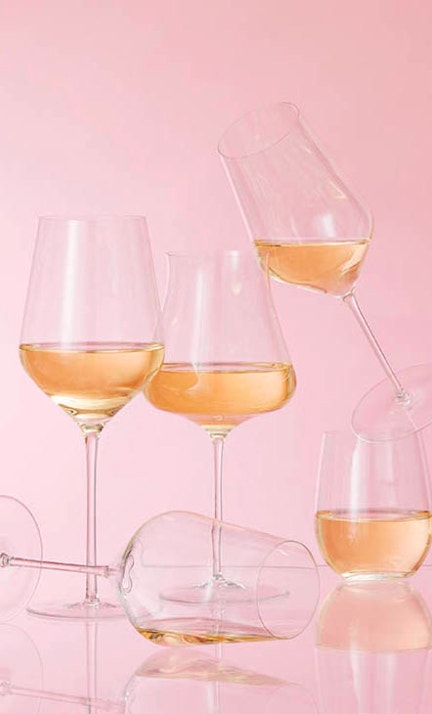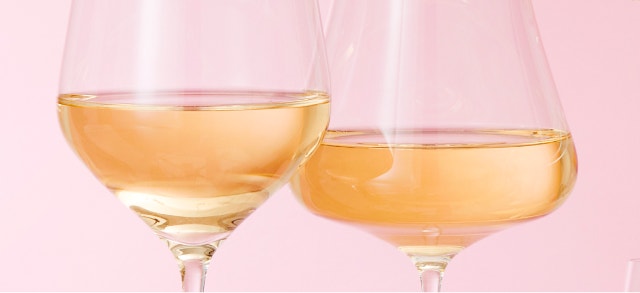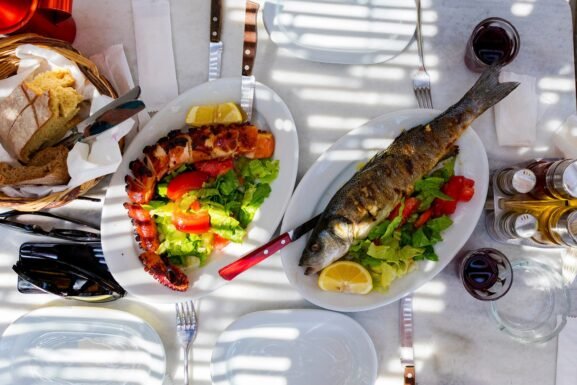What Are Hops? A Beginner’s Guide
Back when everybody still drank light and fizzy lagers, before craft beer became ubiquitous, you couldn’t really taste hops. Even if some drinkers understood that they were one of the four critical ingredients in beer—along with water, malt and yeast—very few could pinpoint what this plant actually did.
This would quickly change with the craft beer revolution. Those who sipped an Anchor Liberty ale (first on the market in 1975) or Sierra Nevada pale ale (1980) would instantly realize some ingredient was creating its citrusy aroma, piney flavor profile and, most importantly, a bitterness that was a heck of a lot different from the grainy, corny and slightly sweet Budweiser and Coors Banquet that dominated the market at the time.
“For some folks, the bitterness, flavor and aroma was just too much to handle,” says Jeremy Moynier, senior manager of brewing and innovation at Stone Brewing in San Diego “But as they started to catch on, the people who liked these beers were super excited and vocal about it and this passion [for hops] is what basically ignited craft beer.”
Whether you’re a die-hard hops lover or a beer beginner, here’s a primer on everything you need to know.
What Are Hops?
Hops are the flowers of the Humulus lupulus plant. They are a climbing plant known as a bine, as opposed to a vine. On the bine are cones made of soft tissue petals and inside are a sticky, yellow gland containing a resin known as lupulin. They are often used in beer brewing to add aroma and flavor notes, as well as to increase shelf life.
The History of Hops
Beer has been brewed as far back as 4,000 B.C. by the Sumerian population of Mesopotamia. The earliest beers were probably gruel-thick and made of cereal grains, spontaneously fermented by the yeast inherent in the air. Whether using barley, wheat or oats, these early beers would have surely been cloyingly sweet—something was needed to balance the flavor.
Enter gruit, a mixture of herbs and flowers that may have included dandelion, marigold, horehound and/or heather. These could balance out the sweetness, but they weren’t able to preserve beer from spoilage. So, early brewers started searching for another, better option. (Though a modern style of unhopped beer, also known as gruit, still exists today, it is rarely seen.)
That’s when brewers turned to hops, which in addition to providing a bittering element, were able to protect beer from bacterial infections and spoil.
“The hop was widely grown and used for brewing in Bavaria, Slovenia and Bohemia from the ninth to the 12th centuries,” says Ian Hornsey, author of Brewing.
Beers brewed with hops would, to a certain extent, launch the craft beer movement. Over time, brewers began brewing beers with even more, a process called extreme hopping. This perhaps started in 1994 when Vinnie Cilurzo, then working for Blind Pig Brewing in Temecula, California, created the world’s first double IPA.
Today, IPAs remain the predominant style of craft beer, but hops no longer need to lend a bracing bitterness. Starting in the mid-2010s, a new breed of IPAs, hazy in appearance, juicy in flavor and soft on the finish began to merge. These are known as New England IPAs, Northeastern IPAs or, eventually, just hazy IPAs. They utilized new-fangled hops specifically designed for their citrus and fruity—not piney—flavors.
“Hazy IPA created an appreciation for the more tropical side of hops and not just that famous, gripping bitterness of the West Coast IPA,” says Matt Brynildson, brewer at Firestone Walker in California.
How Are Hops Used in Brewing Beer?
Hops, usually in a dried, pellet or extract form, are added by brewers during the boil—one of the earliest steps in brewing. The alpha acids inherent in hops release their bittering elements.
Additional hops can also be used later in the process—toward the end of the boil—for the flavorful qualities present in their essential oils. To get the absolute most aroma from them, however, they can also be added post-boil through a process known as dry hopping. Since this is done post-boil, no bitterness is imparted, only an aroma.
Additionally, there are fresh or “wet” hops. In the fall, when they are harvested, brewers immediately take just-picked whole cones to the brew kettle within 48 hours. This produces a uniquely seasonal beer with a fresh green aroma.
Some hop varieties are ideal for their bittering qualities (like Chinook), while others, including many of the more modern varieties, are best for their flavors and aromas—but we’ll get to that soon. Many brewers mix and match, almost treating hop varieties like a spice rack.

Hops to Know
There are several major hop-growing regions in the world, typically in areas with mild climates that offer rich soil, abundant sunshine and reliable precipitation. Hundreds of hop varieties grow in these regions, each offering different attributes of bitterness, flavor and aroma. Here are the common varieties to know.
The Noble Hops
Noble hops are the classic European varieties that have been cultivated since perhaps the eighth century, mostly in the Czech Republic and Germany. The four noble varieties are Hallertauer, Saaz, Tettnang and Spalt. They are favored for their herbal, grassy and floral notes and a zesty, spicy bite. They are mainly deployed in pilsner and other Old World lager styles, as well as some Belgian ales.
The “C” Hops
Though hops had been grown in America since colonial times, prohibition and two world wars would lead to their decline. It would take until the 1970s for America to again offer its own unique hops—a troika of Pacific Northwest-grown varieties all starting with the letter C. Their aromas and flavor profiles would come to epitomize the first few decades of craft beer in the U.S.
First was Cascade, created by Oregon State University’s USDA breeding program. The piney, citrusy profile burst onto the scene via Anchor Liberty ale and Sierra Nevada pale ale. Next, Centennial—sometimes known as “Super Cascade”—arrived in 1990, even more bitter and deployed in icons like Bell’s Two-Hearted and Pliny the Elder. Finally, there was Columbus, dank and potent, and ideal for adding complexity to the other Cs. Today, Oregon, Idaho and Washington remain the prominent hop-growing states.
The Juicy Hops
When bitter IPAs became divisive, fruitier and juicier hops completely changed things. This began with the release of Citra in 2008. Created with funding via the Deschutes, Widmer Brothers and Sierra Nevada breweries, Citra would revolutionize the industry and lead to a whole new breed of pale ales and IPAs, like Three Floyds Zombie Dust and The Alchemist Focal Banger. Other juicy hops of note include Mosaic, often said to taste of blueberries, and El Dorado, famed for its mango and pineapple notes.
The Australasia Hops
Another hop-growing region emerged in Australia and New Zealand, which created unique varieties soon beloved by American brewers. Notably, from Australia there was Galaxy, also ideal for hazy IPAs, and Topaz with its incredible lychee aroma. New Zealand gave us Nelson Sauvin, favored for its Sauvignon Blanc notes, and Motueka, mojito lime-reminiscent hops often used in pilsners.
The Experimental Hops
Some of the most desirable hops today are essentially coming from laboratories.
“Hop breeders first create new cultivars by cross-pollinating different varieties of hops together, hoping that the child will exhibit the best qualities of both,” says homebrewing expert Chris Cagle.
Some favored proprietary hops of the moment include Vista (ideal for fruit-forward IPAs), Talus (offering a coconut aroma), Peacharine (peach/nectarine notes) from New Zealand and Anchovy (hints of watermelon) from Yakima, Washington.
FAQs
What Are the Benefits of Hops?
Hops are necessary for adding bitterness to beer, which keeps a beer from tasting too cloying. They are also used to add aroma and flavor, most notably in beers like pale ales and IPAs.
Do All Beers Have Hops?
The vast majority of beers and beer styles use hops. Gruit, an ancient style, is one of the few to neglect them, instead relying on herbs and spices for bittering elements.
What Do Hops Taste Like?
Hops have a wide variety of aromas and flavor profiles. Some are more piney and dank or juicy and tropical, while others are more spicy and floral or even redolent of blueberries, white wine or eucalyptus.




